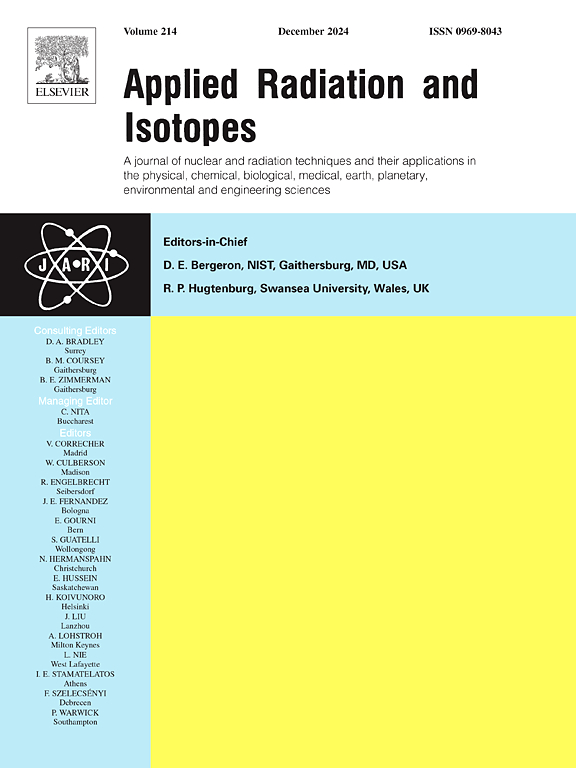Investigation of the chemical and structural composition of scale deposits in piping systems conveying thermal water from Ain Skhouna spring, Agadir region
IF 1.6
3区 工程技术
Q3 CHEMISTRY, INORGANIC & NUCLEAR
引用次数: 0
Abstract
In order to solve the problem of scaling in the pipes used to transport thermal waters from the Ain Skhouna spring in the Agadir region, a physico-chemical analysis of the water and a complete characterization of the scale collected from these pipes are required. The aim of this study is to investigate the clogging of pipes carrying thermal water. Physico-chemical analyses of the water revealed high mineralization, a hardness of approximately 195 °F, and elevated concentrations of major ions, notably Ca2+ and SO42−, which precipitate and cause clogging issues. The scale collected from inside the thermal water pipe was analyzed using various analytical techniques, including X-ray diffraction (XRD), X-ray fluorescence (XRF), thermogravimetric analysis (TGA), differential thermal analysis (TDA), Fourier transform infrared spectroscopy (FTIR), scanning electron microscopy (SEM), and energy-dispersive X-ray spectroscopy (EDS). Identification of the scale deposit using XRF revealed that the sample contained 47.3 % calcium oxide (CaO) and 45.5 % sulfur trioxide (SO3), corresponding to a calcium sulfate content of 92.8 %. The results of XRD and SEM, combined with EDS analysis, revealed that the scale sample consisted mainly of calcium sulfate dihydrate, with trace amounts of calcium carbonate. Thermal analysis indicated a 19.31 % mass loss, consistent with the dehydration of calcium sulfate dihydrate. This study provides insights into addressing the issue of calcium sulfate dihydrate clogging of thermal water pipes at the Ain Skhouna spring.
阿加迪尔地区Ain Skhouna温泉热水输送管道系统中水垢沉积物的化学和结构组成的调查
为了解决用于从阿加迪尔地区的Ain Skhouna温泉输送热水的管道中的结垢问题,需要对水进行物理化学分析并对从这些管道中收集的结垢进行完整的表征。本研究的目的是调查输送热水的管道堵塞。对水的物理化学分析表明,水的矿化度高,硬度约为195°F,主要离子浓度升高,特别是Ca2+和SO42 -,它们会沉淀并导致堵塞问题。利用x射线衍射(XRD)、x射线荧光(XRF)、热重分析(TGA)、差热分析(TDA)、傅里叶变换红外光谱(FTIR)、扫描电子显微镜(SEM)和能量色散x射线光谱(EDS)等多种分析技术对热水管内收集的水垢进行了分析。利用XRF对样品进行鉴定,样品中氧化钙(CaO)含量为47.3%,三氧化硫(SO3)含量为45.5%,相当于硫酸钙含量为92.8%。XRD、SEM和EDS分析结果表明,水垢样品主要由二水合硫酸钙组成,并含有少量碳酸钙。热分析表明质量损失19.31%,与二水合硫酸钙脱水一致。该研究为解决Ain Skhouna泉热水管堵塞的硫酸钙问题提供了见解。
本文章由计算机程序翻译,如有差异,请以英文原文为准。
求助全文
约1分钟内获得全文
求助全文
来源期刊

Applied Radiation and Isotopes
工程技术-核科学技术
CiteScore
3.00
自引率
12.50%
发文量
406
审稿时长
13.5 months
期刊介绍:
Applied Radiation and Isotopes provides a high quality medium for the publication of substantial, original and scientific and technological papers on the development and peaceful application of nuclear, radiation and radionuclide techniques in chemistry, physics, biochemistry, biology, medicine, security, engineering and in the earth, planetary and environmental sciences, all including dosimetry. Nuclear techniques are defined in the broadest sense and both experimental and theoretical papers are welcome. They include the development and use of α- and β-particles, X-rays and γ-rays, neutrons and other nuclear particles and radiations from all sources, including radionuclides, synchrotron sources, cyclotrons and reactors and from the natural environment.
The journal aims to publish papers with significance to an international audience, containing substantial novelty and scientific impact. The Editors reserve the rights to reject, with or without external review, papers that do not meet these criteria.
Papers dealing with radiation processing, i.e., where radiation is used to bring about a biological, chemical or physical change in a material, should be directed to our sister journal Radiation Physics and Chemistry.
 求助内容:
求助内容: 应助结果提醒方式:
应助结果提醒方式:


